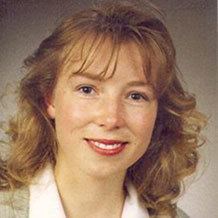Nationality German | Name Reidun Twarock | |
 | ||
Alma mater Clausthal University of Technology | ||
Lms popular lecture series 2008 know your enemy dr reidun twarock
Reidun Twarock is a German-born mathematical biologist at the University of York. She is known for developing mathematical models of viruses based on higher-dimensional lattices.
Contents
- Lms popular lecture series 2008 know your enemy dr reidun twarock
- Mathematics and the fight against viral infections professor reidun twarock
- Education
- Research
- References
Mathematics and the fight against viral infections professor reidun twarock
Education
Twarock originally studied mathematical physics at the universities of Cologne and Bath. During her PhD at Technische Universität Clausthal she experimented with quantum mechanical models confined to the surface of a sphere.
Research
In the early 2000s, while thinking about the Penrose tiling and different ways of dividing the surface of a sphere, she was able to come up with a model describing the exceptional structure of papovaviridae, answering a question in virology that had been open for more than twenty years. Almost all icosahedral viruses have the proteins on their capsids clustered in fives and sixes, with a structure permitting at most 12 clusters of five; but papovaviridae, including the cervical-cancer-causing HPV, have 72 clusters of five This protein layout did not correspond to any spherical polyhedron known to mathematics. Twarock's model of papovaviridae had to be mathematically as well as biologically novel - it resembles a Penrose Tiling wrapped around a sphere.
After this, Twarock entered virology, and began to rigorously link virus structure to fundamental ideas in geometry. It was well understood that viruses have icosahedral shape and symmetry, but the only other thing that was said of them was that they sometimes they possessed planar translational symmetry, causing them to resemble goldberg polyhedra. The question of the exceptional nature of papovaviridae had been solved, but it was not a one-off - HK97 could not be considered a goldberg polyhedron either. Twarock's study of these viruses lead her to believe that there was much more insight into virology that could be gotten from mathematics. Mathematical virology had previously only studied the surfaces of virus, using models that were tilings of the 2-sphere; Twarock hoped to go further than this, to illuminate three-dimensional protein structure and genome packaging.
It was known that, using rotations, simple capsid patterns could be "generated" from a single shape by making copies of it and moving them around in ways that preserve the symmetry. Twarock decided to consider adding an outward translation to this generating process, which created a quite complex patterns of points in 3D space. These patterns turned out to very accurately predict the shape and size of the proteins, as well as the structure of packaged genetic material, for many viruses including Nodaviridae.
The models turned out to be useful for studying the assembly and genomes of RNA viruses. The way that these viruses assemble requires the proteins to bind to specific sequences in the genome that end up in 3-dimensional locations that can be determined mathematically.
Some different viruses require different 3-dimensional models, and so Twarock continued to examine the mathematics and biology at play. More insights were gained using the "cut and project" method of generating penrose tilings. Her models can be thought of as squashed-down three dimensional pictures of the 6-demicubic honeycomb tiling, a "six-dimensional version" of the three-dimensional Tetrahedral-octahedral honeycomb. Different viruses are modelled by different subsets of the vertices of this lattice. The viruses appear to use these patterns because they are the best way of coordinating multiple interacting layers that all have icosahedral symmetry.
Her work has applications to the study of nanomaterials.
